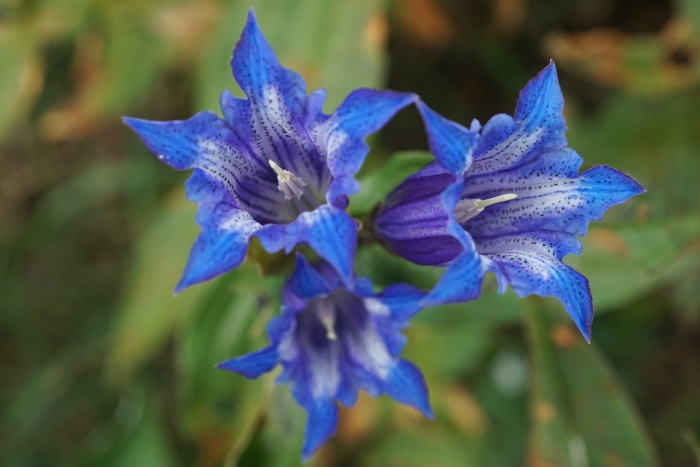Willow Gentian
(Gentiana asclepiadea)
Willow Gentian (Gentiana asclepiadea)
/
/

xulescu_g
CC BY-SA 2.0
Image By:
xulescu_g
Recorded By:
Copyright:
CC BY-SA 2.0
Copyright Notice:
Photo by: xulescu_g | License Type: CC BY-SA 2.0 | License URL: https://creativecommons.org/licenses/by-sa/2.0/ | Uploader: xulescu_g | Publisher: Flickr |





















































Estimated Native Range
Summary
Gentiana asclepiadea, commonly known as Willow Gentian, is a deciduous perennial herb native to a variety of habitats including alpine and subalpine meadows, grassy slopes, and forest clearings in Central and Southeastern Europe, as well as the Middle East and the Balkans. It typically grows to a height of 2-3 feet and a width of 1-2 feet. The plant features lance-shaped leaves and striking, trumpet-shaped, deep blue flowers that bloom in late summer to autumn, adding a splash of color to the garden when many other plants have finished flowering.
Willow Gentian is valued for its ease of maintenance and the beautiful, showy flowers that can enhance the aesthetics of a garden. It is often used in border plantings, rock gardens, and woodland gardens. This species thrives in moist, rich, well-drained soil that is high in organic matter. It prefers full sun to part shade and requires medium amounts of water. While it can be propagated by division after flowering, it seldom needs this. Seed propagation is also possible, with fresh seeds sown into a cold frame immediately after ripening. If sowing indoors, a period of cold stratification is necessary to break seed dormancy. Gentiana asclepiadea has been recognized with the Royal Horticultural Society’s Award of Garden Merit, indicating its exceptional qualities for garden use. Potential problems include root rot if the soil is not well-drained and slug damage to the foliage.CC BY-SA 4.0
Willow Gentian is valued for its ease of maintenance and the beautiful, showy flowers that can enhance the aesthetics of a garden. It is often used in border plantings, rock gardens, and woodland gardens. This species thrives in moist, rich, well-drained soil that is high in organic matter. It prefers full sun to part shade and requires medium amounts of water. While it can be propagated by division after flowering, it seldom needs this. Seed propagation is also possible, with fresh seeds sown into a cold frame immediately after ripening. If sowing indoors, a period of cold stratification is necessary to break seed dormancy. Gentiana asclepiadea has been recognized with the Royal Horticultural Society’s Award of Garden Merit, indicating its exceptional qualities for garden use. Potential problems include root rot if the soil is not well-drained and slug damage to the foliage.CC BY-SA 4.0
Plant Description
- Plant Type: Herb
- Height: 2-3 feet
- Width: 1-2 feet
- Growth Rate: Moderate
- Flower Color: Blue
- Flowering Season: Summer
- Leaf Retention: Deciduous
Growth Requirements
- Sun: Full Sun, Part Shade
- Water: Medium
- Drainage: Medium
Common Uses
Bee Garden, Bird Garden, Butterfly Garden, Deer Resistant, Hummingbird Garden, Low Maintenance, Rabbit Resistant, Rock Garden
Natural Habitat
Alpine and subalpine meadows, grassy slopes, and forest clearings
Other Names
Common Names: Swallowwort Gentian, Schwalbenwurz-Enzian, Gentiane Fausse Asclépiade, Knippgentiana
Scientific Names: , Gentiana asclepiadea, Gentiana schistocalyx, Dasistepha asclepiadea, Gentiana asclepiadea f. albiflora, Gentiana asclepiadea f. cruciata, Gentiana asclepiadea f. pectinata, Gentiana asclepiadea subsp. schistocalyx, Coilantha asclepiadea, Dasystephana asclepiadea
GBIF Accepted Name: Gentiana asclepiadea L.